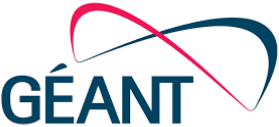Underground Asset Management – Enriching Data and the Importance of GIS for Accurate Fiber Buildout – Part 2
Trusted by:


















In the second part of this series focusing on the management of assets in telecoms, we’ll identify some of the steps that are required for operators striving to meet the challenge of managing their assets effectively.
As we noted in the first blog in this series, with hybrid networks and new technologies emerging at pace, managing network assets – those both over- and underground is understandably fast becoming more complicated in the context of both existing networks and in planning to extend (build out) them to meet market demand. Now, let’s look more closely at the challenge.
GIS and fiber buildout
We’ve established that GIS is more than just location information and, as such, it isn’t simply about physical coordinates enriching asset data. It’s context that matters. Network build and planning examples underline why this is the case. For example:
- When physically laying cables and digging trenches (or even hanging fibers from poles – although here, we’re focused on things below the surface) operators need to understand the relationship between assets in the ground, for instance utility cabling. Existing infrastructure is an unavoidable obstacle so accurate information is vital to successful completion of any buildout.
- Wayleave (agreements between landowners/landlords and telecoms providers) information is critical because it’s vital to ensuring that permitted routes are not only followed but also followed without impacting other users of the same access rights.
- Operators must be aware of cables, ducts, manholes, handholes by exact location. You can’t plan a new core fiber or FTTH deployment without this information or at least not without almost certainly raising the cost per connection.
It’s GIS that enables the issues above to be resolved. Thus, it can be seen as a necessary component of core fiber and FTTH design. And there are numerous other examples in addition to those above, such as mobile extensions where new cell sites merge with fiber connectivity; PON deployments extend to buildings; compound buildings where utilities are centralized; and others.

Three steps to a holistic view of underground assets
While getting there is a multi-step process and a reasonably complex challenge, we can identify three steps immediately that stand out as the platform for subsequent actions leading to effective asset management. These can arguably be considered in advance of all else and operators who are not addressing these already should do so now.
1. Address the network data challenge
This requires harnessing information, including geospatial information, from a vast array of sources ranging from elements in the infrastructure to mobile devices to IoT sensors and beyond. Information must be collected, harmonized, and made available in real-time – likely via open APIs – and enriched by external information ranging from location-based to weather and other hazard data. Optimizing performance in this area is mission-critical to future success.
2. Build the map
Operators must create an integrated, comprehensive, and current “map” of all infrastructure below (and above) ground so they can quickly identify issues and manage network assets effectively. The map should drive dashboards or other devices that present and track live, location-based intelligence. Does this exist now? Where it doesn’t, building it should be a priority.
3. Deliver real-time information
Data is critical but live information (including accurate location data in particular) is even more so. Without real-time, operators can’t take rapid remedial action or mitigate problems quickly when required to do so. It’s real time that underlies the increasing agility and mitigation of operational risk that is prerequisite in the current telecoms network landscape.
Plus, the added importance of GIS
Asset data on its own isn’t enough. As we’ve said it must be enriched but why is location, and GIS information, particularly important in the context of under- (and, let’s not forget, above-) ground asset management? Again, there are multiple reasons but here are three leading advantages enriched data infers:
1. You can’t fix what you can’t find
Let’s say there’s a Single Point of Failure in the network. Without GIS to identify the location and give an awareness of which back-up systems could remedy the problem and how best to do so, you’re stuck. The “network map” is critical to solving the problem. Simply knowing there’s a problem isn’t enough.
2. Build it – and make sure they come
Location information is central to effective network buildout. You need to expand the network, but where? And why? GIS provides not just location but also context. The enriched data becomes meaningful. It informs the operator about the presence of properties, other utilities, and additional information critical to planning. Being aware of this ultimately ensures a better performing and more targeted network buildout strategy.
3. Low-problem deployments
If the operator is aware of potential obstacles in the physical path of a rollout, then a key and common deployment problem is solved. Information about other works planned in an area, where existing cables, sewers, pipes, and other utilities are located, etc. is provided by GIS and ensures network rollout avoids unnecessary obstacles, so lowering costs and smoothing network build operations.
For the operator, all these steps and many other related are the domain of the Network Inventory Management platform. One leading example is Service2Create (S2C) software from VC4, which tackles the challenge using a rigorous set process. It collects raw data from multiple endpoints in the network, normalizes, enriches, and then reconciles it.
As a result, S2C delivers a critical, panoramic view all physical and logical resources in the network giving the operator a clear, unified understanding of live network assets, and their utilization and configuration at any given time. The platform can also be integrated into the network itself to support auto-provisioning (service fulfillment), which facilitates building and rolling out services in the network – reducing costs still further.
To learn more about how VC4 Service2Create and GIS functionality perform in tandem, please download our GIS whitepaper to gain further insights.
Another interesting read which can further deepen your knowledge is our paper on – “Maximising your GPON Investments”. Click through to download it.



